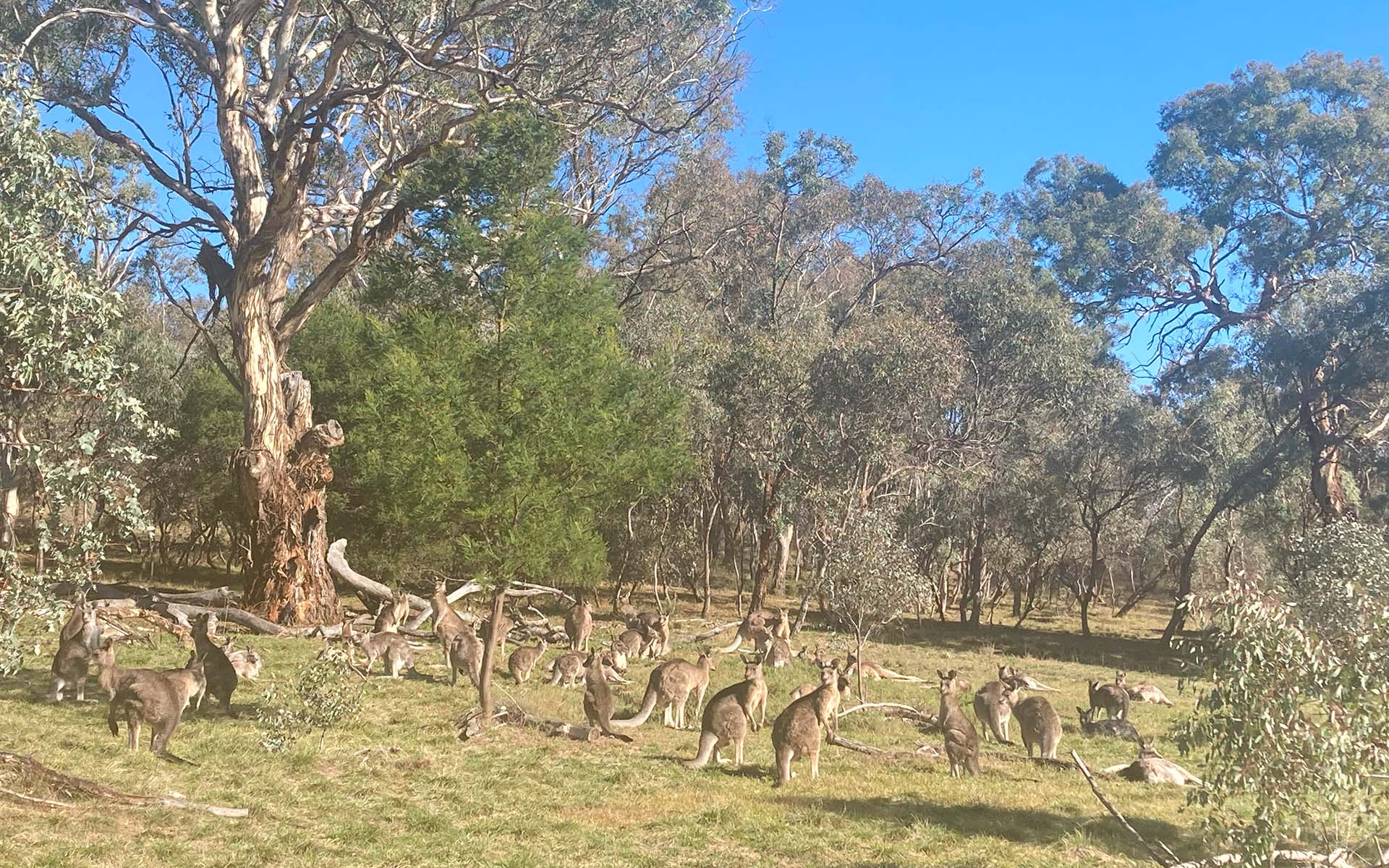
In May, I was part of a Nepali team for the Canberra Fellowship Program, organized by Australia’s Department of Foreign Affairs and Trade (DFAT). Themed “Cybersecurity, Misinformation, and Hybrid Threats,” the fellowship offered unique insights into Australia’s knowledge ecosystem and its global posture. Above all, it gave us a glimpse into Australian society, its values, and the Nepali diaspora across three major cities—Sydney, Melbourne, and Canberra.
In this piece, I offer reflections on Australia’s academic and policy landscape, its evolving foreign policy, and my broader impressions about the nation—its people, cities, and diplomacy. I reflect on a changing perception: how the Kangaroo Country balances economic ties with Asia and strategic alliances with the West.
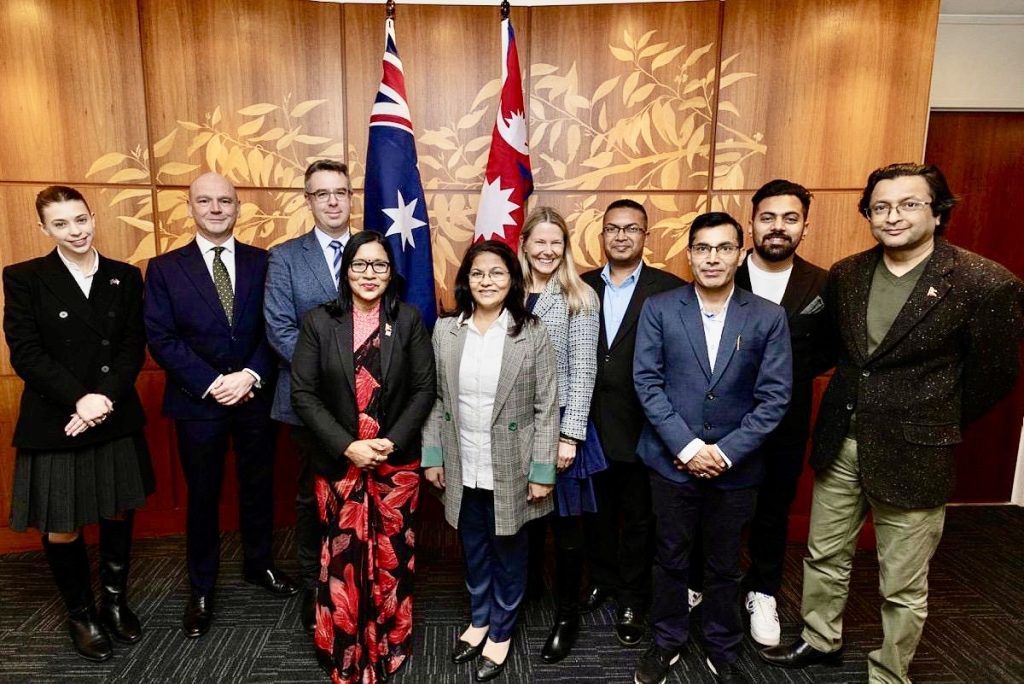
One of the focuses of the study tour was our exposure to Australia’s academic institutions. From the University of Sydney, the Australian National University (ANU), and Monash University to the University of Melbourne, the teaching-learning ecosystem struck me as both innovative and responsive. Universities there were more than places of learning; in fact, they were actors in shaping public policy and national vision. Whether public universities, independent think tanks like the Lowy Institute, or private businesses like CyberCX, many programs we observed were linked with governmental priorities.
For instance, research on cybersecurity and hybrid threats is not only academically rigorous but also backed by public funding and policy demand. This alignment among stakeholders ensures that policies are grounded in evidence, public need, and sensitivity to civil liberties, particularly when regulating the digital space.
I was surprised to see a blend of technology, innovation, and hands-on learning at the Monash Innovation Lab, where we literally found no “backbenchers.” Instead of a fixed “front,” classrooms feature circular or hexagonal tables seating up to eight students each, with open spaces and modular furniture allowing instructors to move freely among the tables. Overall, teaching-learning approaches are interdisciplinary. For countries like Nepal, where academic programs are heavily theory-based and lecture-driven, such innovative and inclusive styles can offer a meaningful model.

Before visiting, I assumed Australia was simply an extension of the West—culturally European, strategically aligned with the United States, and a member of groups like the Five Eyes and the Quadrilateral Security Dialogue (a strategic forum comprising Australia, India, Japan, and the United States). My experience revealed a far more nuanced picture. Australia, it seems, is neither strictly Western nor entirely regional. Its diplomacy balances deep-rooted ties with growing economic interdependence with Asia-Pacific countries, including China, Japan, South Korea, India, and the United States. These five nations are its top export partners.
Such a policy is not new. At the height of the Cold War, in July 1970, Gough Whitlam, then opposition Labour Party leader, made a historic trip to China—becoming one of the first Western leaders to engage with the People’s Republic of China. While returning from Beijing, he learned of the secret visit of US National Security Adviser Henry Kissinger, who landed in Beijing two days after Whitlam’s return to set the stage for President Richard Nixon’s trip to Beijing in 1972.
When Whitlam became Prime Minister the following year, he adopted a soft policy toward communist China. That visit, now dubbed visionary, aimed to reframe Australia’s place in the world—less as a Western country and more as a regional power with an independent foreign policy.
Diplomacy frequently traverses twists and turns, particularly between countries with contrasting political systems and strategic alignments, as seen between China and Australia.
Canberra-Beijing relations soured during the COVID-19 pandemic, as Australia, alongside 13 Western nations—including the US, Canada, and the UK—questioned the joint China–World Health Organization report on the genesis of SARS-CoV-2. The report stressed the likelihood of the virus originating from animals, like bats or pangolins, before transmitting to humans.
Questioning the transparency of the data and access to the original samples of the initial novel coronavirus cases, the 14 countries’ call for further investigation, keeping all hypotheses—including the lab-leak theory—open, angered China, which ultimately rejected the Western demand.
Post-pandemic, Canberra-Beijing engagement has improved with growing trade and diplomacy. In mid-July, Australian Prime Minister Anthony Albanese visited China for a week-long business tour, endorsing Taiwan’s status quo while carefully avoiding being drawn into West–China tensions.
During our discussions, many Australian officials, experts, and think tanks did not explicitly emphasize ties with the West, even though they maintain the British monarch as head of state. Nor did they speak positively about China—particularly in areas related to cyber defense and hybrid warfare. While acknowledging growing business ties with China, many pointed out the concurrent rise in cybersecurity issues originating from Chinese sources. Most of these threats are linked to or coordinated with Russia or Russian-affiliated networks. Yet Dr. David Brewster, Professor of Strategic and Defense Studies at ANU, said, “We are allies,” referring to the United States.
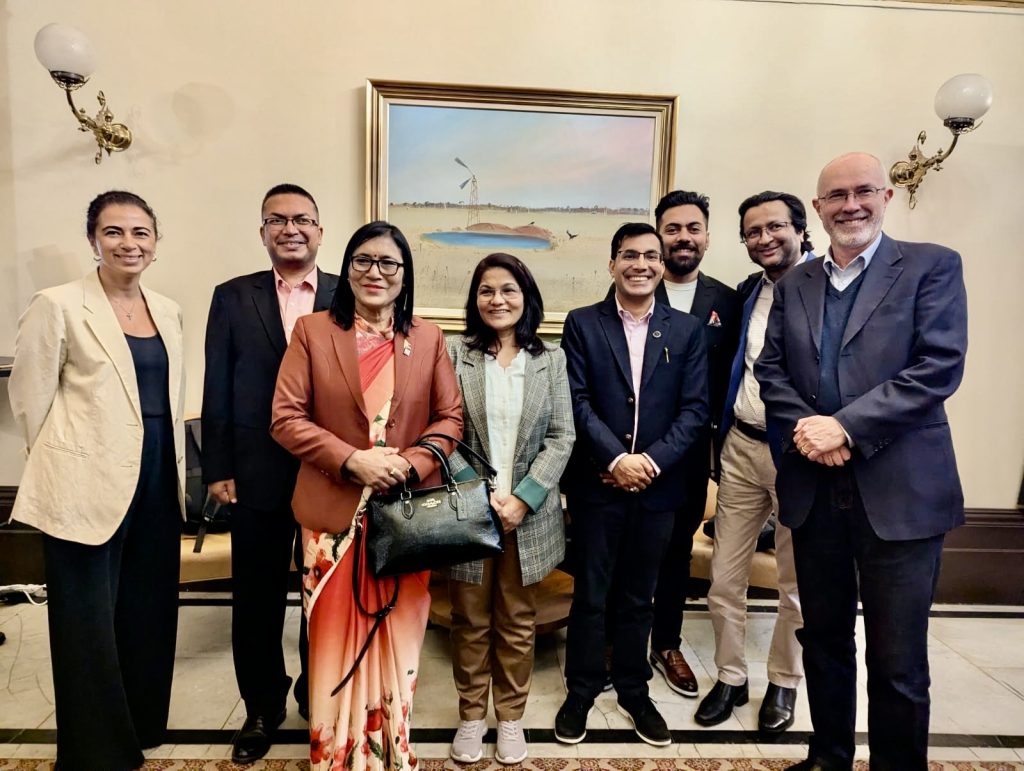
On the whole, most speakers focused on domestic resilience, societal cohesion, and regional cooperation and partnership—perhaps reflecting a subtle shift in strategic emphasis due to new polity in Washington, D.C., which was considered a key factor in Labour Prime Minister Albanese’s landslide re-election in May.
The other key themes of the program—cybersecurity and information disorder—resonate with Nepal’s own challenges. During our discussions, while Australian scholars and policymakers reiterated the danger of digital threats and disinformation, they were equally concerned about the risks of overregulation. Striking a fine balance between national security and digital rights was a recurring concern.
Nepal has yet to fully acknowledge misinformation as a peril to democracy. Political parties, interest groups, and even the intelligentsia often use misleading information to advance their agendas. Even our media faces scrutiny when fact-checkers need to verify the authenticity of content.
Australia has strengthened its national security framework through comprehensive cyber defense and disinformation policies. While adopting curative measures, it has designated many digital appliances and tools—such as CCTV cameras, electric vehicles, AI tools, and drones—as high-risk for cybersecurity. In addition, its Cyber Security Act 2024 mandates that businesses with over AU$3 million in annual turnover, or critical infrastructure entities, must report ransomware payments to the Australian Signals Directorate—aiming to maintain visibility into cyber threats, disrupt ransomware business models, and promote transparency.
Australia has executed cyber defenses and tackled information disorder by coordinating through multiple stakeholders—including the private sector, political parties, media, cyber defense teams, and public agencies like DFAT and the Department of Home Affairs. Such an approach enhances threat awareness, drives preventive measures, and enables swift intervention when needed.
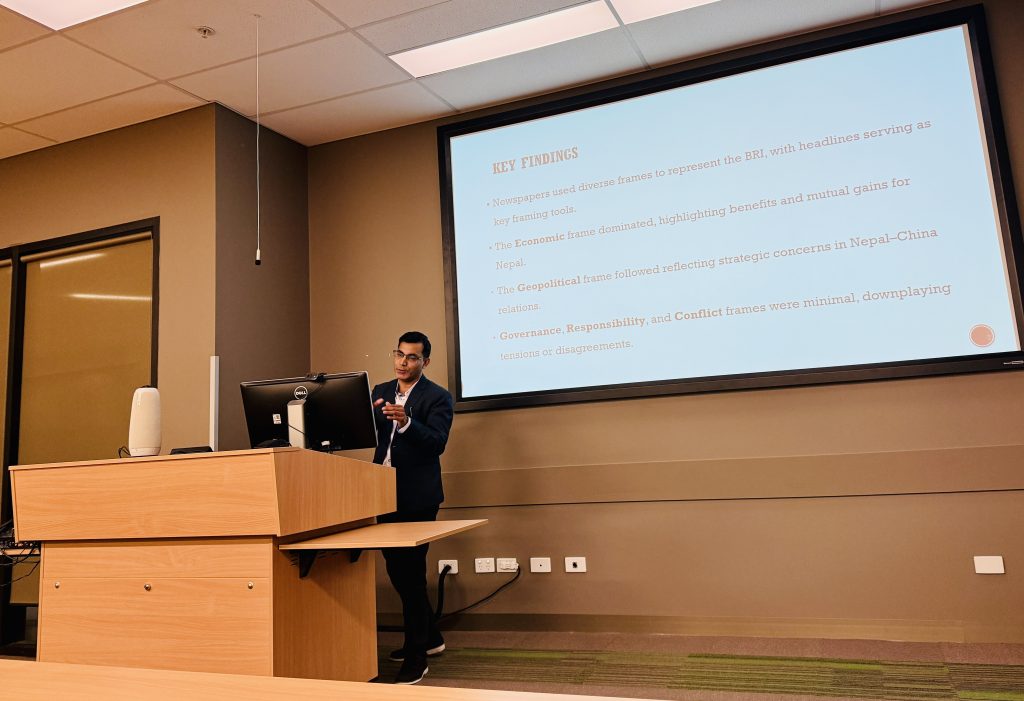
This is particularly relevant for Nepal. Recent government-led policies to regulate cyberspace, including the Information Technology Act and proposed social media bills, have sparked significant backlash that could have been mitigated through informed and interdisciplinary discourse.
While abroad, I often visit Nepali diplomatic outposts and connect with the Nepali diaspora if time permits. Such opportunities offer insights into Nepali missions and diaspora engagement with local societies. During this study tour, I made brief visits to the Nepali embassy in Canberra and honorary consulate offices in Sydney and Melbourne, meeting Ambassador Chitra Lekha Yadav and Consuls Shanjeev Sharma and Nirajan Gauli.
These conversations focused on Nepal’s evolving media landscape, socio-political developments, and the lives of growing Nepali communities in Australia. Discussions with Anil Pokharel, Chair of the Non-Resident Nepali Association (NRNA) Australia, Consul Gauli, and my friend Shiva Tiwari, conducting research at the University of Sydney, were particularly insightful regarding the changing Nepali diaspora. Concerns centered on third-generation Nepali emigrants losing connections to their origins as they blend with local cultures and values.
On the lighter side, I had the opportunity to spend time with family and friends, exploring Sydney’s Vivid lights and stunning beaches.
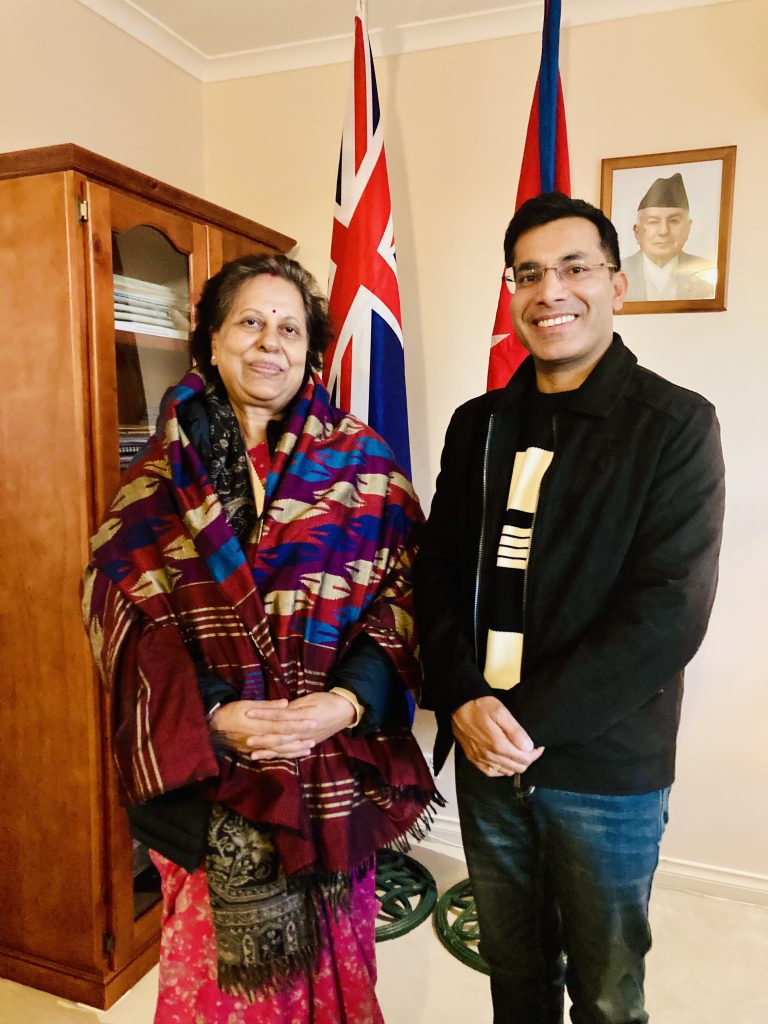
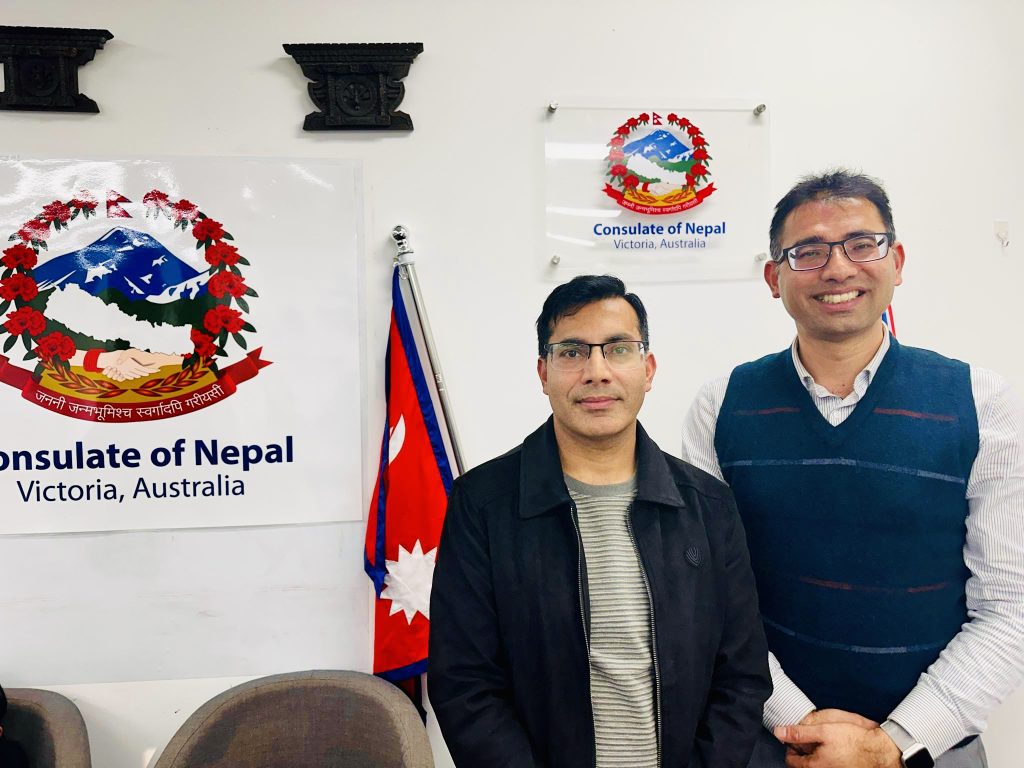
What truly impressed me was the way Nepalis live in Australia, which hosts a vibrant and growing Nepali diaspora. This view is based on my observations of Nepalis in other advanced societies like Europe and the United States. While visiting Melbourne’s Glenroy neighborhood, I was amazed to find myself surrounded by Nepali passengers at nearby train stations.
Many shared stories of early hardship, juggling study and part-time work, but also spoke of the freedoms, opportunities, and community support they had found. For many, Australia felt like a home away from home. This blend of Western infrastructure and Asian inclusivity, along with a welcoming attitude toward migrants, makes Australia especially unique. The country’s openness, combined with robust institutions, offers a positive model for multicultural societies.
Of the three cities I visited—Sydney, Melbourne, and Canberra—I found Canberra the most memorable. Unlike the bustling cities, Canberra radiates peace, fresh air, and green open spaces. At times, I had to remind myself I wasn’t in a Nordic town. After seeing mobs of kangaroos in Canberra, a Nepali colleague jokingly said there were probably more kangaroos than people!
Deputy Ambassador Greg Klemm once shared how his wife, originally from Gujarat, India, was stunned by the city’s emptiness on her first visit. For someone like me, coming from Kathmandu’s concrete jungle, Canberra’s tranquility was refreshing and grounding.
Despite being far from home, we never really missed dal-bhat or curry. Perhaps it was our curiosity to try new dishes—or maybe Australia’s rich culinary diversity satisfies every palate. I was captivated by the subtle ways Australians have established their own values and identity.
For example, instead of saying “Americano” for coffee, they call it a “long black,” and rather than “downtown,” they refer to the “central business district” or CBD. These are just a few examples of how Australians subtly distance themselves from their Western heritage, while still following British spellings, date formats, and terminologies like “footpath” and “petrol” instead of “sidewalk” and “gas” as in the U.S.
Despite hectic official engagements, we experienced early-morning hot-air ballooning over Melbourne’s bustling CBD, enjoying scenic views from 3,000 feet above the clouds. For most of us, it was a first-time experience.
I have never been a sports fan, though I enjoy cricket and watch FIFA World Cup finals. This tour allowed us to watch some of Australia’s unique football games at the iconic Melbourne Cricket Ground, considered the spiritual home of cricket in Australia. The ground, which hosted the first-ever Test match between Australia and England in 1877, is now fully rebuilt with over 100,000 seating capacity. We watched the Australian Football League (AFL) match between Hawthorn and Collingwood.
While in Canberra, Greg Klemm, Deputy Ambassador of Australia to Nepal, invited us to watch his favorite sport at a pub. A few of us joined him. It was a relaxed evening—sipping drinks, munching on chips, and soaking in the atmosphere.
The game? Rugby League, and the series is called the State of Origin—a fierce rivalry between Queensland (red) and New South Wales (blue). Klemm, originally from Brisbane, cheered for the Reds, and naturally, we joined him.
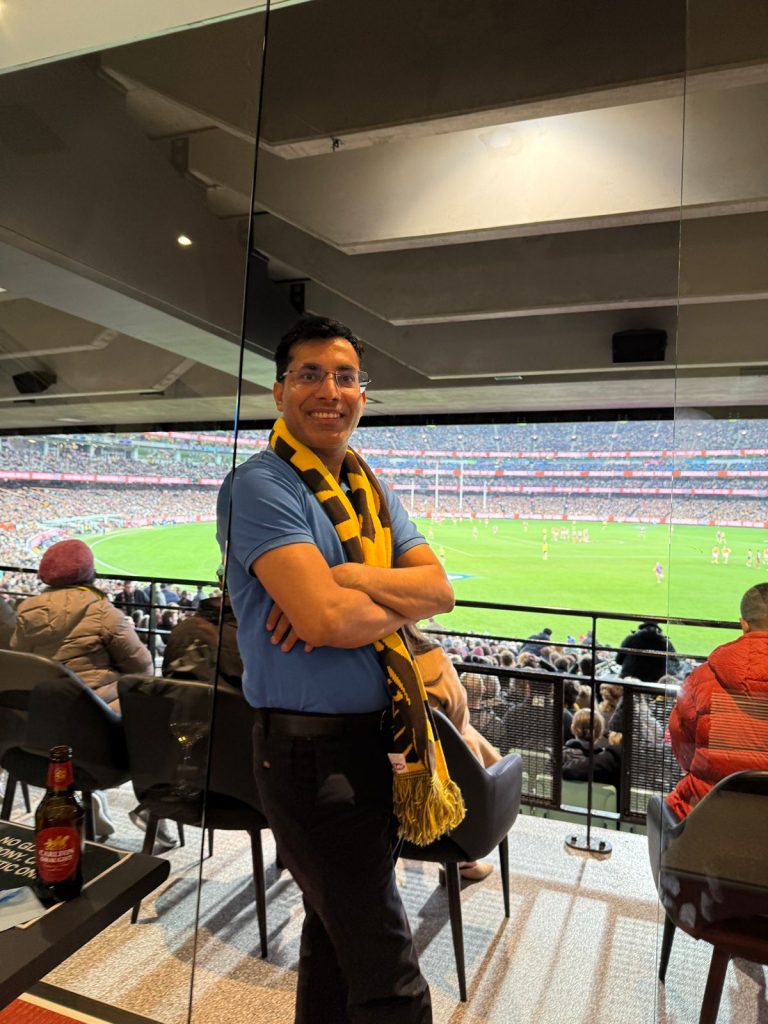
Midway through the match, I stepped out for a quick bathroom break. On my way back, I bumped into one of Klemm’s DFAT colleagues, whom I had met the previous day. He seemed surprised to see me and mentioned he was supporting the Blues. Trying to be polite, I said, “Well, I do like the color blue.” A harmless bit of wordplay—or so I thought.
A few minutes later, he showed up at our table. Klemm proudly noted we were all backing the Reds, who were trailing at the time. Then, the DFAT colleague pointed at me and said, “Well, not all of you—he’s on our side!” Everyone laughed. I had been dubbed a traitor for switching allegiances—just for being polite.
From that moment on, I became the running joke of the evening. My awkwardness only deepened when Queensland (Reds) lost badly. Thankfully, Klemm later told me that Queensland won the next two games, sealing the series. That bit of news made me feel a little less guilty about my “betrayal.”
Australia surprised me and changed many of my assumptions. It blends Western and regional vibes, is strategic yet culturally relaxed, and innovative yet grounded. From koalas to kangaroos, policy labs to the Nepali diaspora, Australia revealed itself as an advancing democracy—balancing security with openness, strategic alliances with the West, and economic ties with China. As Nepal—situated between two competing giants, China and India—navigates its digital and diplomatic future, there is much to learn from Canberra’s approach: quiet, balanced, and sensible.